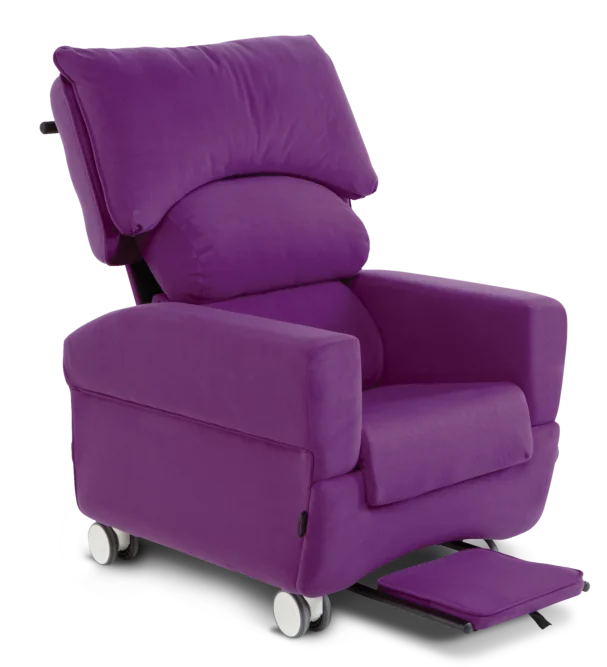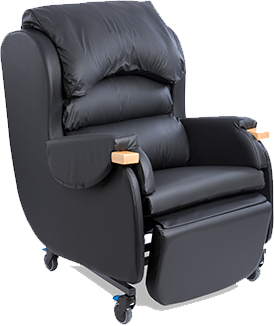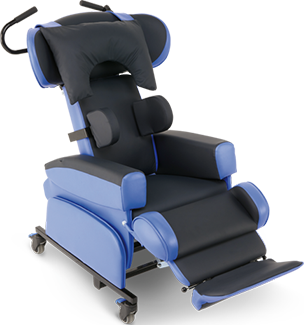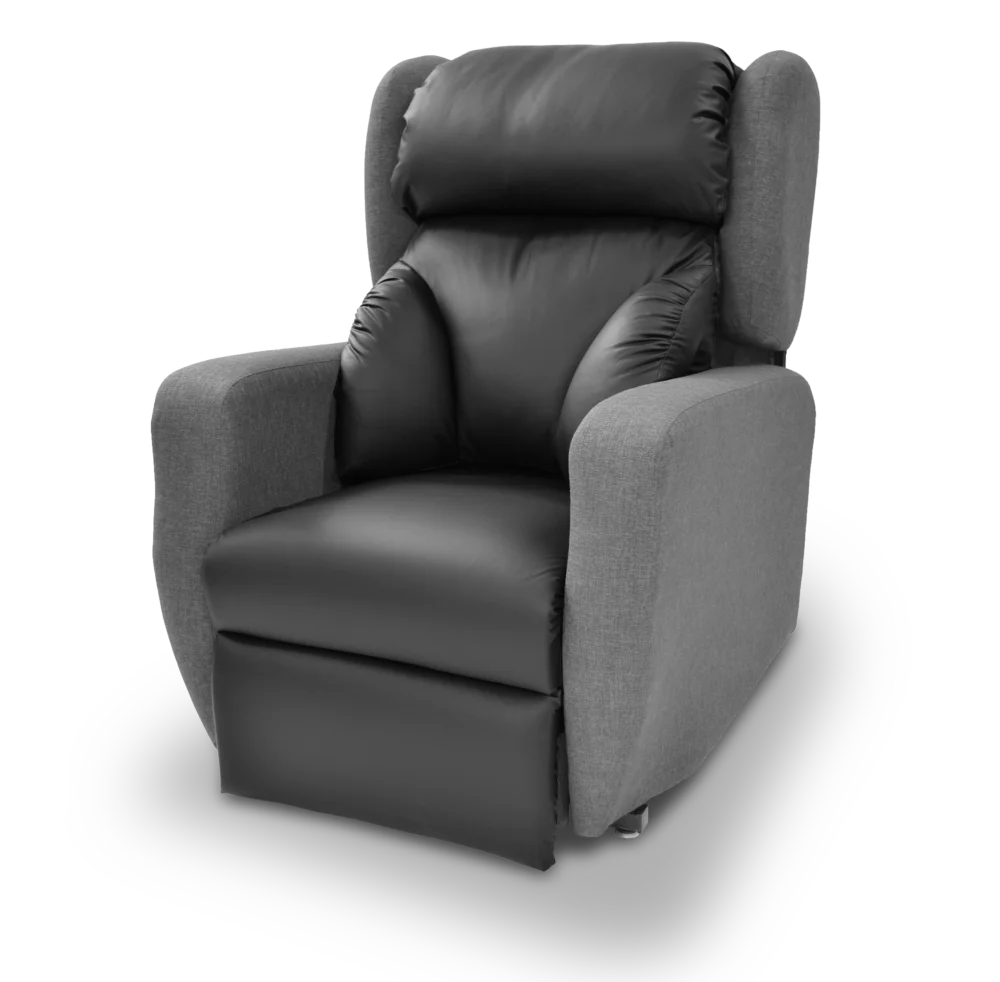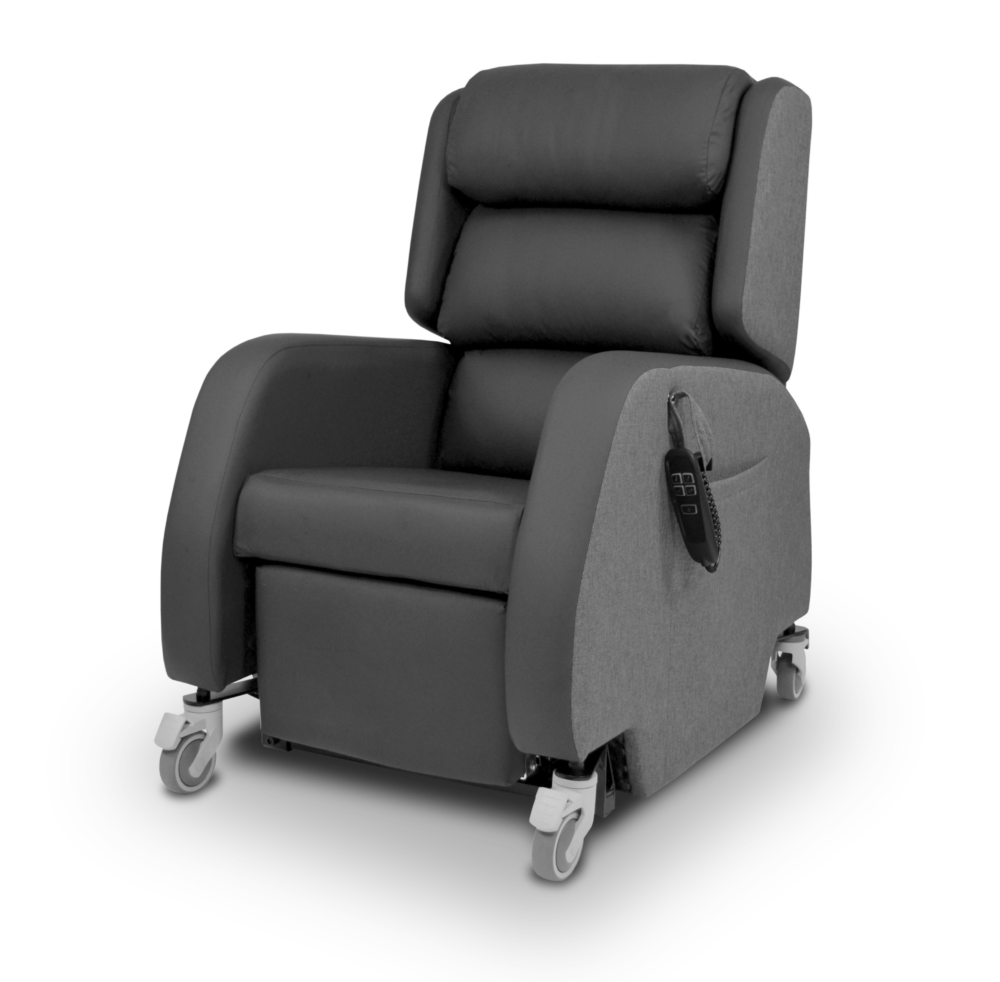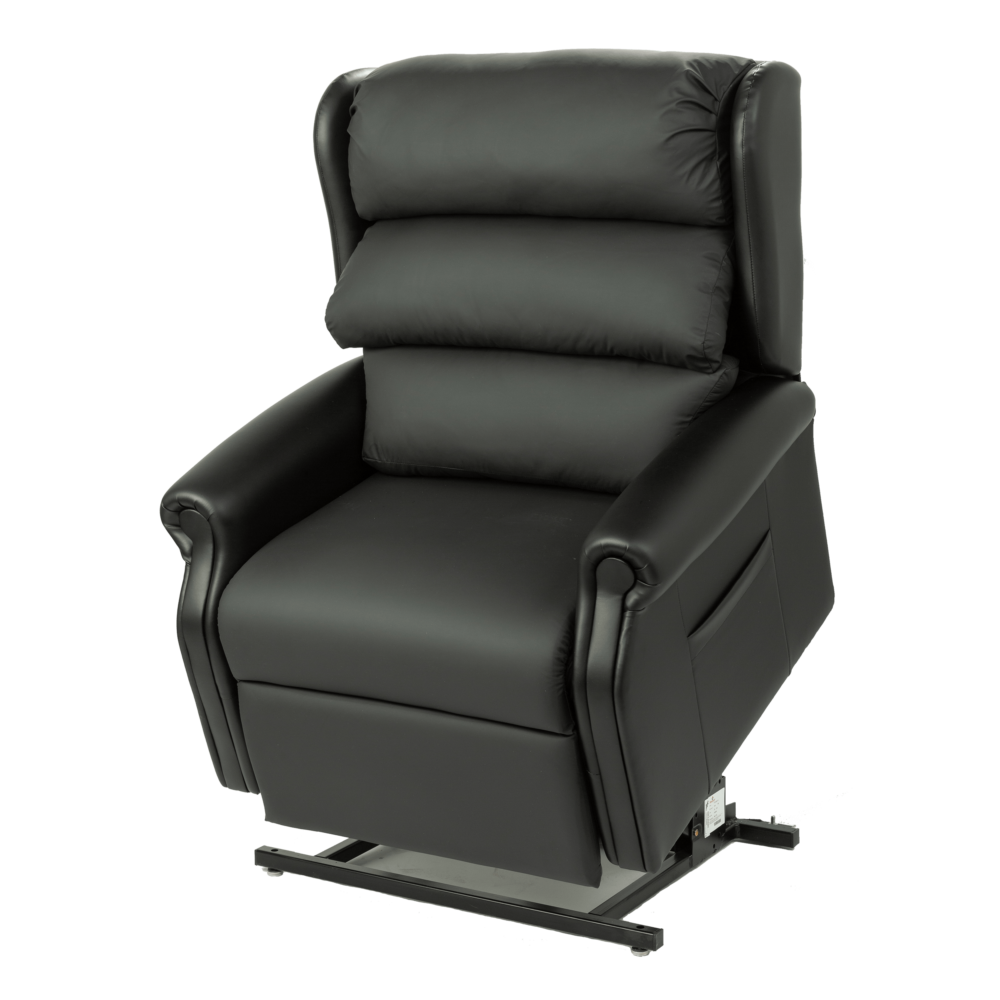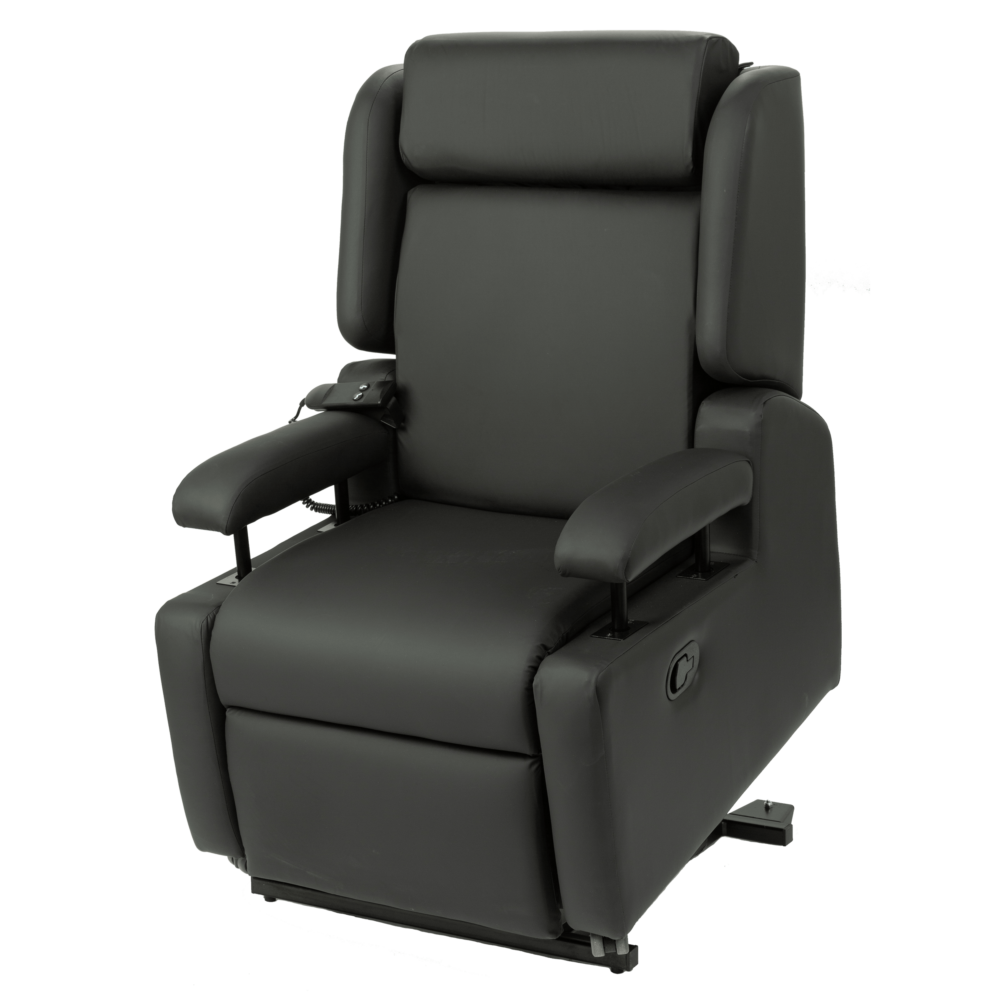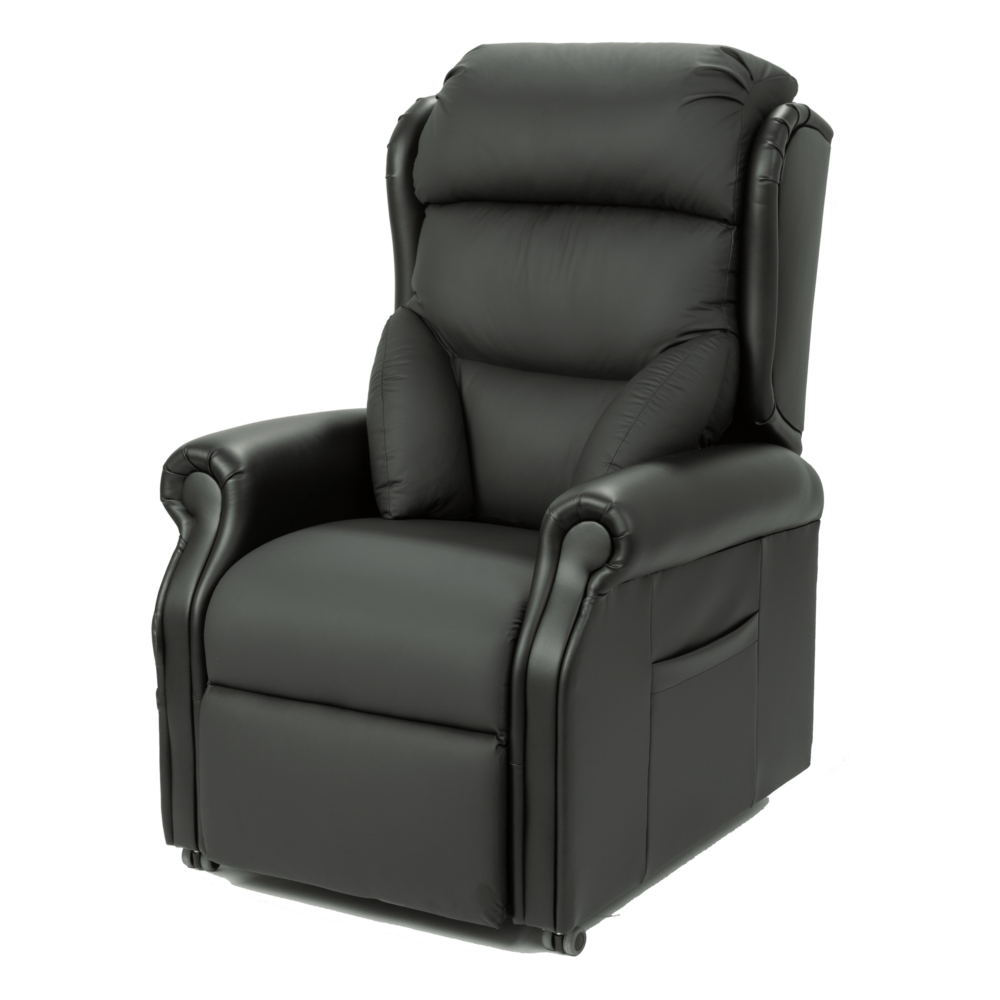Seating Solutions for the Spine
When a person presents with a postural challenge at the spine, it is essential that their specialist seating addresses it.
During the assessment process, the clinician will determine if the spine can be corrected or if it needs to be accommodated, which will then inform the seating prescription.
Support at the spine is the key to maintaining pelvic stability, achieving optimum head positioning, and encouraging function.
How can specialist seating manage an increased thoracic kyphosis?
Seating solutions for an increased thoracic kyphosis can include:
- Ensuring the correct seat depth, seat width and arm rest height.
- Ensuring adequate trunk and head support.
- Tilt-in-space, if appropriate, to encourage pelvic stability and energy management.
If the person’s posture is fixed then the following can help:
- A waterfall back with the wadding adjusted to fully support their posture, especially at the apex of the curvature.
- An articulating head rest to encourage a supportive head position for maximum comfort and safety.
- An anterior support, such as a chest harness, following a risk assessment, may be indicated.
It is also essential that any associated posterior pelvic tilt and/or scoliosis is addressed.
How can CareFlex help?
The much loved HydroTilt could be a great solution for a person with an increased thoracic kyphosis. The HydroTilt offers a waterfall back, seat adjustment, tilt-in-space, and integrated WaterCell Technology.
If greater flexibility is required for more complex postures, then the HydroFlex with an articulating headrest and a range of head supports could be the suitable solution.
How can specialist seating manage scoliosis?
Seating solutions for a person with a scoliosis should include:
- Ensuring appropriate chair set-up and seat dimensions.
- Adequate trunk support, encouraging an as aligned position as possible.
If a person presents with a mild scoliosis then they may be well managed with two-point lateral support.
Moderate to severe scoliosis may require three-point or multi-point lateral support.
Additional seating solutions that may help include:
- A chest harness, following risk assessment, to encourage trunk stability.
- Tilt-in-space, if appropriate, to encourage pelvic stability and energy management.
It is also important to address any associated pelvic obliquity and/or pelvic rotation.
How can CareFlex help?
The HydroFlex could be a great solution for mild to moderate scoliosis as it offers a deep contoured back, tilt-in-space, integrated WaterCell Technology. There is also the option to fix extra adjustable lateral support.
If greater flexibility is required for more complex and/or fixed scoliotic postures, then the SmartSeatPro with multi-adjustable back components could be the suitable solution. The back components can be altered in height, depth, angle, offset and rotation, enabling greater contouring to the spine through multi-point support. The built-in adjustable wings can also be positioned out of the way to assist transfers and activities of daily living.
How can specialist seating manage an increased lumbar lordosis?
Seating solutions for an increased lumbar lordosis can include:
- Tilt-in-space, a ramped base, or pelvic belt, following a risk assessment, to encourage pelvic stability, comfort and energy management.
- Using a tray to form an anterior support for the trunk as this can often be very effective and functional for the individual.
A lumbar support can also be trialled; however, this can sometimes increase hyperextension depending on the individual’s response to sensation.
It is worth noting that it is critical for the clinician to assess if an increased anterior pelvic tilt is the cause of the increased lumbar lordosis as this will need addressing.
How can CareFlex help?
The HydroTilt could be a great solution for an increased lumbar lordosis with a waterfall back that can be reconfigured, tilt-in-space and integrated WaterCell Technology.
The HydroTilt XL may be indicated for individuals with increased body weight and size that is impacting on their lordosis.
There is also the option to add a pelvic belt and tray to CareFlex chairs.
Please do not hesitate to get in touch with Rebecca Dunstall, Clinical Specialist, to answer any person-specific postural concerns.

